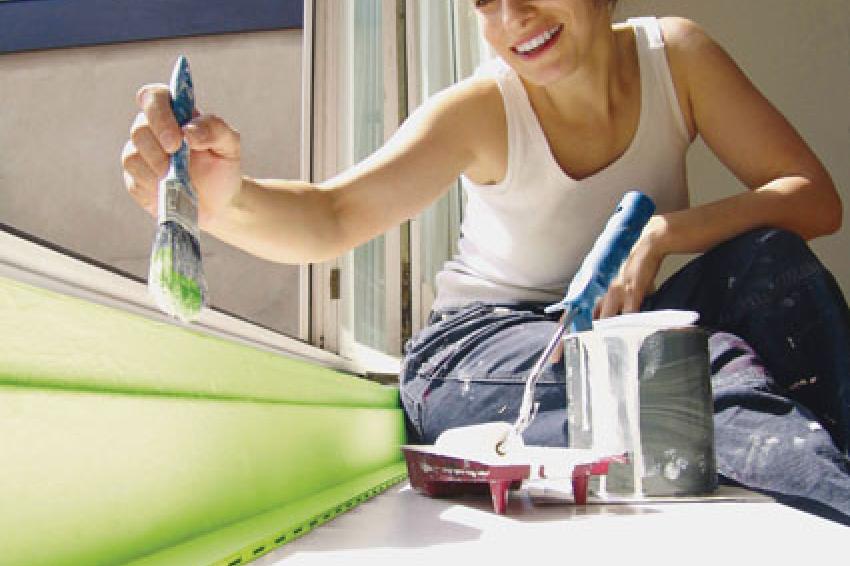Emission Regulations for Paint
How Coalescing Aids Can Help Paint Manufacturers
Adjusting Accordingly - There is a growing public and political concern for the environmental impact and safety of paint and other building materials. In France, legislation has been recently approved to label all indoor paint and construction products according to their level of emission. As a result, manufacturers of materials such as paints and coatings are looking to adjust their portfolios and production accordingly.
Paint manufacturers can meet today's strict industry regulations and performance needs by using coalescing aids in their products without the need for a complete reformulation and certification of their paint products.
The new French legislation - Grenelle de l'environnement - is in addition to the current European Union directive, 2004/42/EC, on volatile organic compounds (VOCs), commonly referred to as the Decopaint directive. It describes a mandatory emissions labelling of all construction products used indoors and includes paints and coatings amongst other construction products.
Effective from Jan. 1, any new building product, including paint, placed in the French market must have a label affixed containing one of four letter grades: A+, A, B or C, which indicate the level of emission produced by the product. Paints that are currently sold in the French market need to apply the same classification from Sept. 1, 2013.
The mandatory letter-grade labelling is based on emission testing after 28 days via ISO 16000. The higher the emission, the less favourable the classification is, with A+ ratings being ideal. The French regulation allows emission evaluations via a chamber method (ISO 16000-9) or the Field and Laboratory Emission Cell method (ISO16000-10).
To Meet the Regulations, What Are the Options?
Manufacturers of architectural coatings in Europe are being driven by the aforementioned regulatory directives, retailer requirements and consumer preferences to deliver products with reduced volatile organic compounds and lower emissions. This must be accomplished while maintaining optimum paint performance in scrub resistance, block resistance, low temperature film formation, and other parameters.
Formulating with coalescent-free alternative binders to meet VOC or emission regulations can lead to issues. Adding polymers with low glass-transition temperatures (Tg) or self-crosslinking polymers are techniques that binder formulators have developed to reduce or eliminate the need for coalescents. However, low Tg polymers normally produce softer, tackier coatings and the formulated paints can suffer in terms of poor blocking, dirt pick-up resistance, surface hardness and film cohesion.
The introduction of crosslinking polymers is another technique to enhance the application properties of soft, low Tg binders. However, the crosslinking technologies for water-based paints are usually expensive compared to conventional resin systems and are not suited for many product segments in this highly priced competitive market.
According to a recent independent study of coalescent versus coalescent-free architectural paints conducted by the Paint Research Association for Eastman Chemical Company, coalescent-free paints presented serious performance issues, including in the areas of scrub resistance, porosity, mud cracking, blocking, print resistance, hardness and color development. The same study showed that paints containing coalescing aids produced excellent results even when applied in the most demanding conditions.
Compliance
Most importantly, independent emission evaluations of architectural wall paints containing Eastman Texanol ester alcohol and Eastman Optifilm Enhancer 300 show that these formulations can comply with the new French mandatory emission labelling. The independent evaluations, conducted by Eurofins and using a chamber test method, actually showed that matt and satin paints containing the two coalescing aids achieved an A+ rating for both emission and the principal substances detected.
In short, paint manufacturers can meet today's strict industry regulations and performance needs by using coalescing aids in their products without the need for a complete reformulation and certification of their paint products.
Contact
Eastman Chemical Company
200 South Wilcox Drive
37662 Kingsport
Tennessee
+1 423 224 0498
+1 423 224 0648





